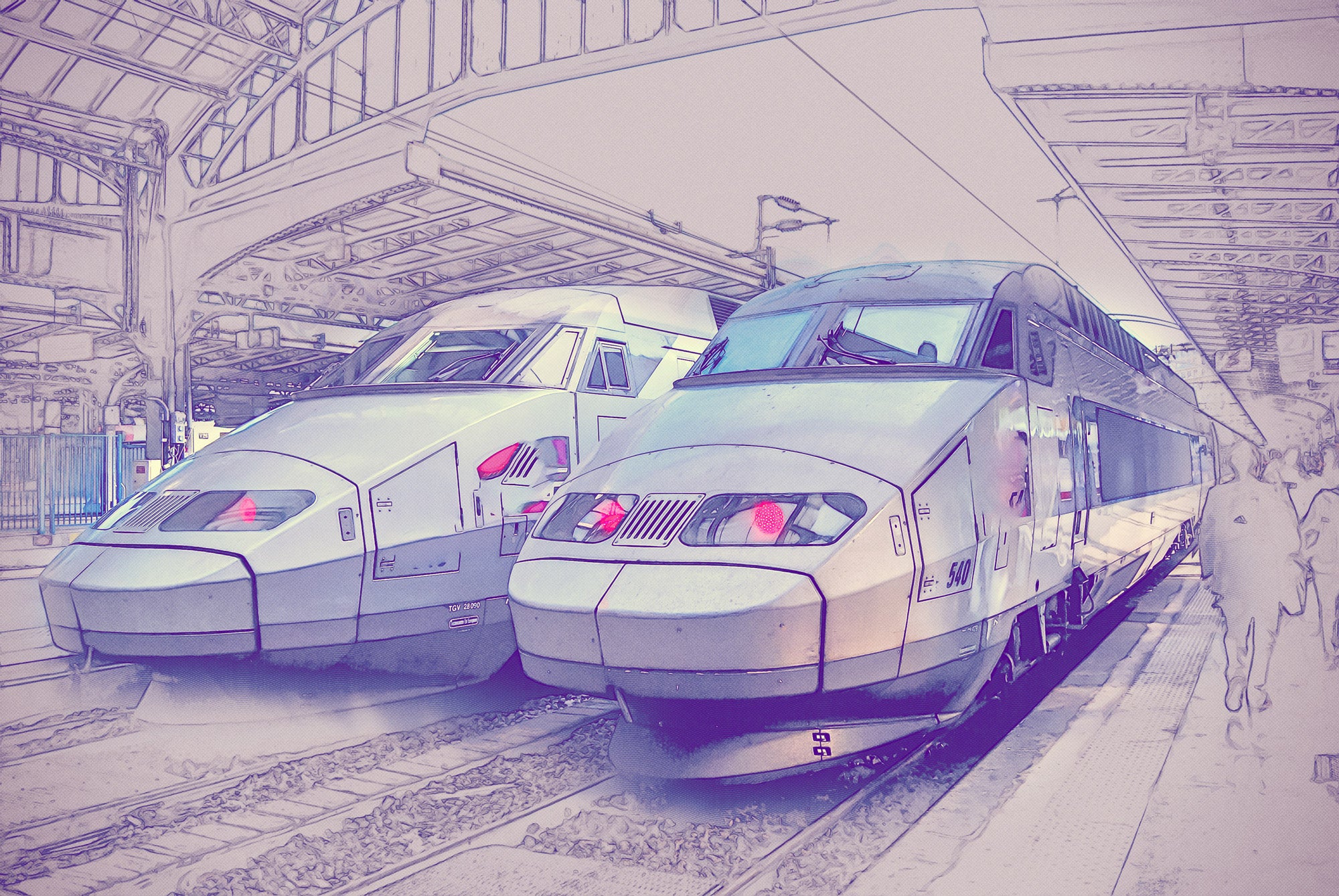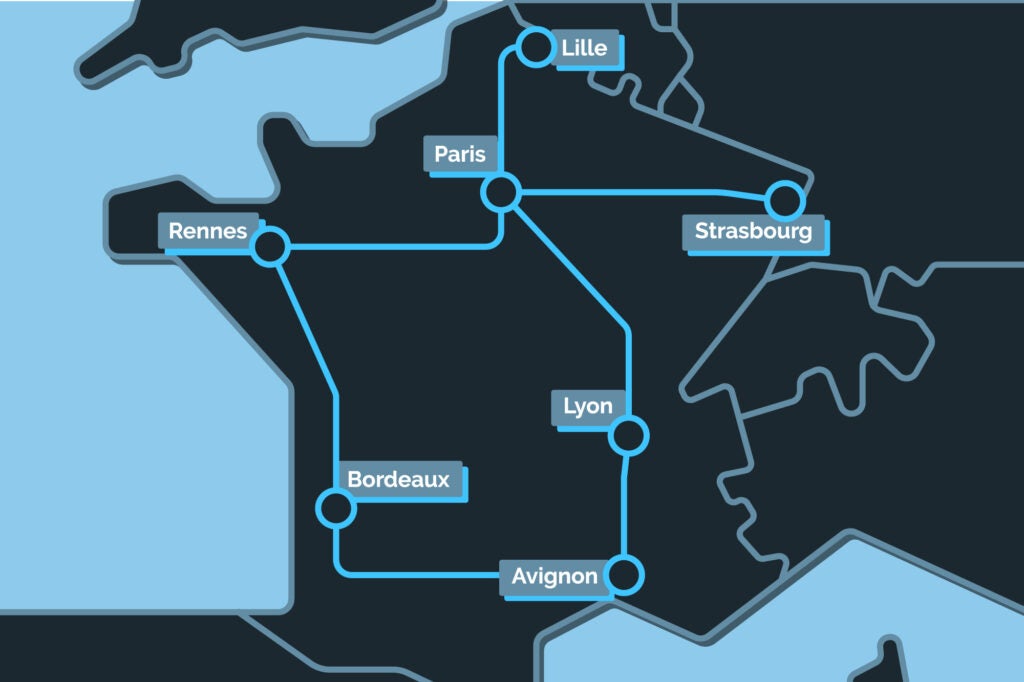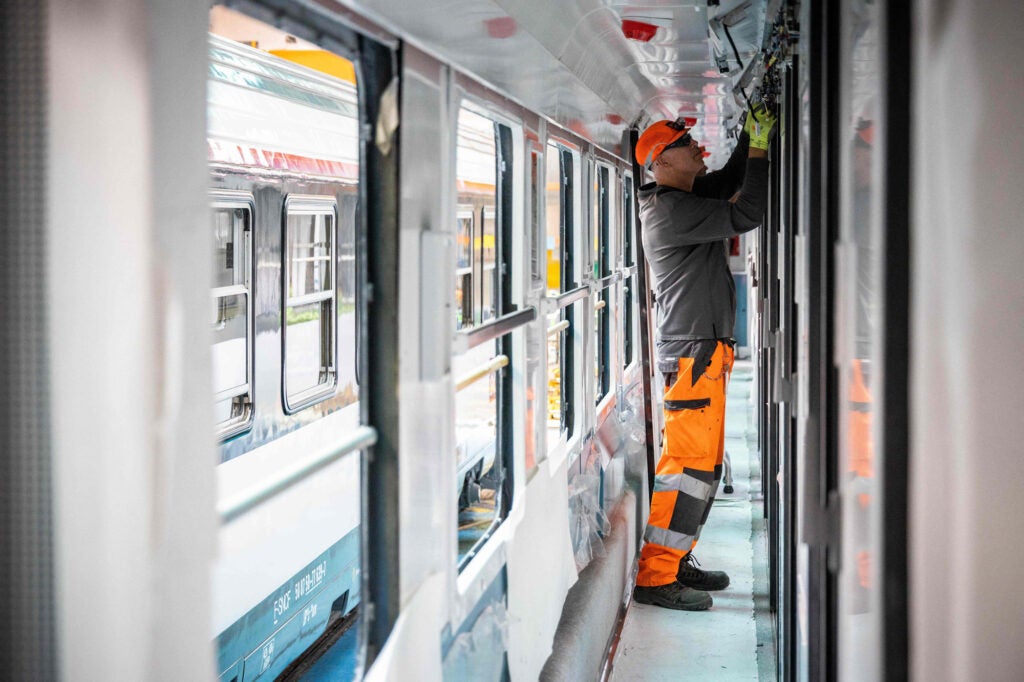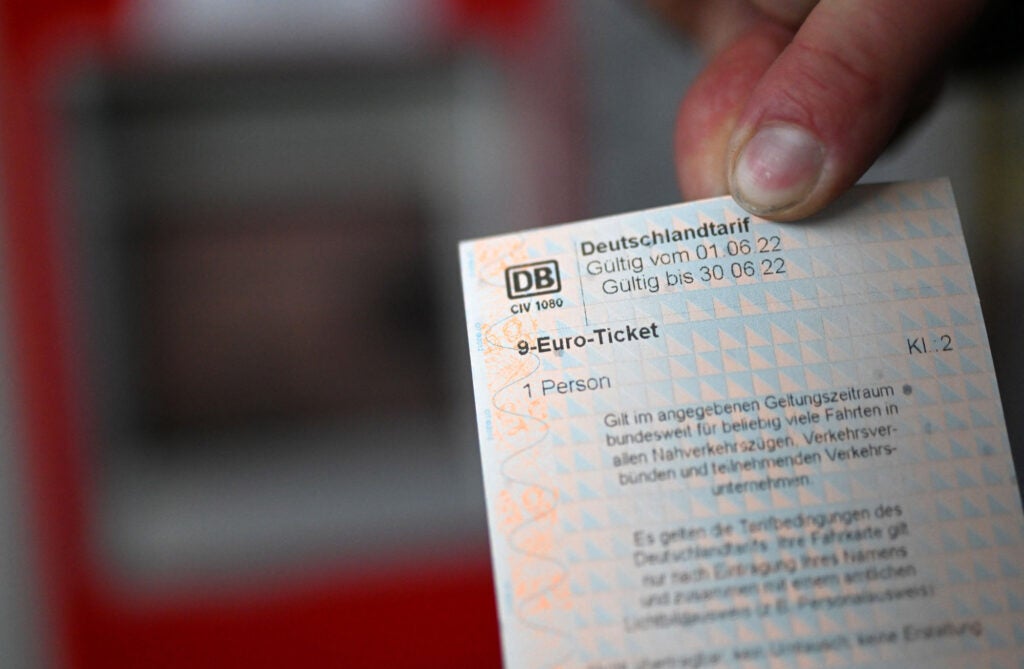
In April 2022, the French Government took the bold step to ban some short-haul domestic flight routes in the country.
The decision was passed in 2021 as part of French President Emmanuel Macron’s French citizens’ climate convention, with aims to curb the country’s carbon emissions from aviation, as part of a broader national environmental strategy to reduce carbon emissions by 40% by 2030.

Discover B2B Marketing That Performs
Combine business intelligence and editorial excellence to reach engaged professionals across 36 leading media platforms.
The ban hit all domestic flight routes where an alternative rail journey under two and a half hours is available, which, The Guardian has reported, could remove 12% of French domestic flights from schedules.
Most of the affected short-haul routes are between Paris and cities in the south of the country, such as Nantes, Lyon, Bordeaux, and Rennes. Flights between Lyon and Marseille also fall under the new ban.
Travellers who would have used these routes for business and leisure will now need to find an alternative method of transportation – but they are lucky that there is one ready and waiting for them, in the form of the French high-speed rail network.
However, though many view the initiative as a broadly positive move, the limit of a two-and-a-half-hour alternative rail journey has drawn criticism from environmental groups, considering the initial discussions were considering a cap of a four-hour rail journey. It has also been deplored, as expected, by businesses in the aviation sector, and by union groups representing workers in aviation.
French investment in high-speed rail gives a platform to alternative modes
France has a long and proud history of high-speed rail. The Train à Grande Vitesse (TGV) is something of a national icon in France, not just for rail enthusiasts.

US Tariffs are shifting - will you react or anticipate?
Don’t let policy changes catch you off guard. Stay proactive with real-time data and expert analysis.
By GlobalDataFrench national railway company SNCF began operation of the first high-speed TGV line between Paris and Lyon on 27 September 1981, at a maximum speed of 260km/h. In the ensuing 40 years, the French high-speed network has grown drastically, with an annual ridership of roughly 110 million passengers pre-pandemic.
And it looks like the focus on high-speed rail in France isn’t wavering, with the next-generation TGV model announced last year, on the 40th anniversary of the maiden service. At the government level, the Elysée has been consistently funding the railway industry in general, investing €61bn in the last five years and pledging to invest a further €6.5bn.

The important factor to consider is that France is only able to somewhat comfortably enact this type of aviation ban on short-haul domestic flights because it already has a transport network able to take on the extra capacity through rail. The country has consistently invested in projects to expand and improve its rail network; specifically, the high-speed network. Travellers are already fully aware of their rail options, and many are used to taking them.
The routes impacted by the French short-haul flight ban are some of the busiest domestic flights in France. Shifting those passengers from air to rail will not only drastically reduce the carbon impact, but also boost revenue for rail in France – something any rail network would welcome with open arms in the aftermath of Covid-19.
Many of the routes impacted by the domestic flight ban are already served by high-speed rail services, and these services are already a popular choice with travellers. For example, Paris–Lyon, a flight that is banned under the new rules, is also already the busiest rail route in France.
According to SNCF, one-third of all high-speed traffic in the country runs along this line – including not just TGV services, but also trains operated on major trans-European routes with Spain and Italy. The 460km line carried 240 trains per day in 2017, when the ridership hit its maximum capacity of 44 million passengers per year, resulting in a €600m project to upgrade the line.
“The best way of getting passengers off planes and onto trains is simple. Remove the choice.“
In mainland Europe, rail is often a cheaper option than flying and can be far more convenient, as travelling via rail is generally from city centre to city centre, as opposed to from airports in the outskirts of cities.
According to French consumer group UFC-Que Choisir, on average, a plane on one of the banned short-haul routes emits 77 times more CO2 per passenger than trains on these routes, even though the train is cheaper and the time lost is limited to 40 minutes.
Looking again at the TGV Sud-Est line as an example, a ticket from Paris to Lyon can cost as little as €10-€20, whereas the cheapest flight would be around €85. When you land at Lyon, it’s a 40-minute journey into the centre of Lyon – negating the lost time by using rail, according to UFC-Que Choisir’s estimates.
The efficacy of a short-haul domestic flight ban can be debated, and the existing arguments of whether passengers should choose aviation or rail will continue on other routes. But the best way of getting passengers off planes and onto trains is simple. Remove the choice.
Climate crisis: domestic short-haul bans are not enough
“Short-haul flights are extremely polluting and should be banned where an alternative connection exists, but the French travel time limit of two-and-a-half-hours leaves a huge number of short flights still in operation, including Paris-Marseille – one of the top three domestic flights in terms of greenhouse gas emissions,” Greenpeace EU spokesperson John Hyland told Airport Technology following the announcement of the ban in April 2021.
The localised impact of the ban, as it only applies to domestic routes, has also been brought into the conversation – although, in fairness, expanding it outside France’s borders would be a decision to be made by the EU, relying on cross-border agreements.
But there does seem to be a consensus that the bloc should look into similar tactics – according to the European Investment Bank, 62% of Europeans would support a ban on short-distance flights.
“The EU and European Governments, France included, should ban all domestic and cross-border short flights when passengers can use less polluting transport, like rail or bus,” Hyland added.
The EU is, understandably, supportive of moves to curb carbon emissions; but environmental campaigners maintain that more action is needed as the global environmental crisis worsens.
“In 10-15 years, I believe that short-haul flights in Europe will be a thing of the past.“
The EU is implementing a series of initiatives on short-haul flights, including creating the conditions for transport operators to offer passengers carbon-neutral alternatives and doubling high-speed rail availability by 2030, and further tripling it by 2050. Some 135 transport infrastructure projects have been selected for EU grants, totalling €5.4bn of investment.
Greenpeace has previously called for a short-haul ban across all of Europe, with research commissioned by the environmental group showing that 73 of the 250 busiest short-haul flights in Europe (EU, Norway, Switzerland, and the UK) have rail alternatives with journey times of under six hours, and 41 of the 150 busiest EU flights have direct night train alternatives.
Herwig Schuster, campaign development and project lead at Greenpeace, told Airport Technology in February: “The French Government has already banned some flights that are less than two hours. I think more countries will do this. In 10-15 years, I believe that short-haul flights in Europe will be a thing of the past.”
There has also been renewed interest in night-train services in Europe in recent years. The German Green Party revealed plans for a trans-European night railway network last year, sparking debate about whether the idea could become reality.

New night train routes that have been launched recently include Brussels to Prague and Graz to Warsaw. Earlier this month, a new service from Hamburg to Stockholm was also launched, joining a fellow Scandinavian service linking Sweden, Denmark, and Germany that was launched in 2021 by Snälltåget. And in France, the Paris-Nice night train services resumed operations in May 2021 after a four-year hiatus.
Josef Doppelbauer, executive director of the EU Agency for Railways, told Future Rail in November last year: “I see a strong will now [for night trains in Europe], driven by the European Green Deal. And there is also this Fit for 55 package. I think there is also a significant amount of funding available now from the recovery and resilience funds, so the conditions are better than they ever were, I’m tempted to say.”
European neighbours will be keeping a watchful eye
Two years ahead of France, in 2020, the Austrian Government was forced to bail out Austrian Airlines due to the operator’s losses resulting from the pandemic. A condition of the deal was that the airline was instructed to eliminate all domestic short-haul flights from its schedule when there is an alternative train journey possible under three hours, such as between Vienna and Salzburg.
It’s been estimated that 80% of short-haul domestic flights in Austria can be replaced by rail. Austria will no doubt be hoping that, alongside France, it can set an example for its European neighbours.
Neighbouring both France and Austria is Germany, a country that has previously debated a ban on short-haul flights, only for voices from the aviation sector to drown out the conversation. Germany has, however, doubled taxes on all short-haul airline tickets in an attempt to discourage passengers away from pricey flights and toward more affordable train travel.

Interestingly, the UK seems to consistently take the opposite position to its European counterparts. Where Germany increased tariffs on short-haul flights, the UK was accused last year of going “headlong in the wrong direction” after then-Chancellor Rishi Sunak opted to reduce tax on domestic flights by half.
Where France has a history of high-speed rail to offset the domestic flights, Brits refuse to stop arguing in circles about HS2, the country’s first real attempt at anything remotely similar to the high-speed networks found on the continent. Where Germany chooses to subsidise public transport with a nationwide ticket costing just €9 a month; the UK chooses to cut services and create stand-offs with unions.
In the context of the UK, a domestic flight ban could be replicated on routes such as London–Manchester. Between the two cities, half a million flights were taken every year before the pandemic, with CO₂ emissions for this journey being 70.7kg CO₂ equivalent, according to LNER’s carbon calculator. However, the alternatives to flying are currently not as simple as in other countries. The London to Manchester rail service has been cut to a barebone timetable, with limited ticket availability.
France has the opportunity to set a real example, alongside Austria, that the future of European travel can, should, and will be on the railways. Let’s see if the rest of the continent follows their lead.



